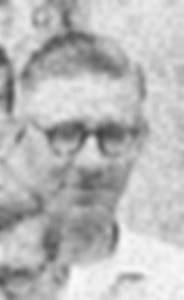D.W.G. Arthur
Contents
David "Dai" Arthur
(lunar scientist)Table of Contents
[#David "Dai" Arthur David "Dai" Arthur]
[#David "Dai" Arthur-Lunar Work Lunar Work]
[#David "Dai" Arthur-Where & When Where & When]
[#David "Dai" Arthur-Personal Information Personal Information]
[#David "Dai" Arthur-Personal Information-Photo Photo]
[#David "Dai" Arthur-Personal Information-Birth Birth]
[#David "Dai" Arthur-Personal Information-Death Death]
[#David "Dai" Arthur-Personal Information-Education Education]
[#David "Dai" Arthur-Personal Information-Current Contact Information/Websites Current Contact Information/Websites]
[#David "Dai" Arthur-Publications Publications]
[#David "Dai" Arthur-LPODs LPODs]
[#David "Dai" Arthur-Bibliography Bibliography]
Lunar Work
A founding member of the University of Arizona's [/LPL Lunar and Planetary Laboratory], Arthur came to Tucson with [/Gerard%20Kuiper Gerard Kuiper] and [/Ewen%20Whitaker Ewen Whitaker] by way of Yerkes Observatory. At the [/LPL LPL] he oversaw work on the [/System%20of%20Lunar%20Craters System of Lunar Craters] (a major revision of the [/IAU%20nomenclature IAU nomenclature]) and the [/ULCN Tucson Selenodetic Triangulation] (a new system of positional control points on the Moon). He ended his career with the [/USGS USGS] in Flagstaff where he applied his experience primarily to the analysis of Viking photographs of Mars.
Where & When
- Before joining Kuiper, Arthur enjoyed some repute as a member of the Lunar Section of the [/BAA BAA]. His activities were highlighted as an example of the kinds of significant work that could be contributed by a dedicated amateur in a 1956 article by Sky and Telescope editor Joseph [/Ashbrook Ashbrook]. It seems that Arthur, then living in Workingham, England, had self-published four issues of what he called Contributions to Selenography mostly featuring measurements he made on copies of glass negatives obtained from Mount Wilson and Lick Observatories. Volume 1 was a list of 1,400 crater diameters measured by J. Young; Volume 2 gave precise positions for 490 features in [/Mare%20Imbrium Mare Imbrium]; Volume 3 added 300 features in [/Oceanus%20Procellarum Oceanus Procellarum]; Volume 4 gave formulas for converting the X-Y positions observed on a lunar plate to their positions at zero libration; and Volume 5 listed 580 points around [/Copernicus Copernicus]. Ashbrook predicted that these would become extremely rare in future years, since in some cases, less than 50 copies were distributed. - JimMosher JimMosher
- Arthur was once the name for crater Anaximander C (H.P.Wilkins and P.Moore, see their book THE MOON). Indeed, certain maps of the moon's nearside show the name Arthur. See also Wilkins's and Moore's list of their nomenclature. - DannyCaes DannyCaes Mar 30, 2018
Personal Information
Photo
 from [/LPL Whitaker, 1985] p. 24 (see also p.26)
from [/LPL Whitaker, 1985] p. 24 (see also p.26)
Birth
Wales
Death
Deceased ?
Education
Current Contact Information/Websites
Publications
LPODs
Bibliography
- J. Ashbrook. (1956). "Surveying the Moon." Sky and Telescope (Aug. issue), p. 452.
- The appearance of the name Arthur near the north-northwestern part of the moon's limb, see Section 6 (chart) on page 256 of Patrick Moore's New Guide To The Moon (Norton, 1976).
- Would be interesting to see all of Patrick Moore's and Hugh Percy Wilkins's names on the nomenclature overlay of the LROC ACT-REACT QUICK MAP.
This page has been edited 1 times. The last modification was made by - tychocrater tychocrater on Jun 13, 2009 3:24 pm - mwsx1